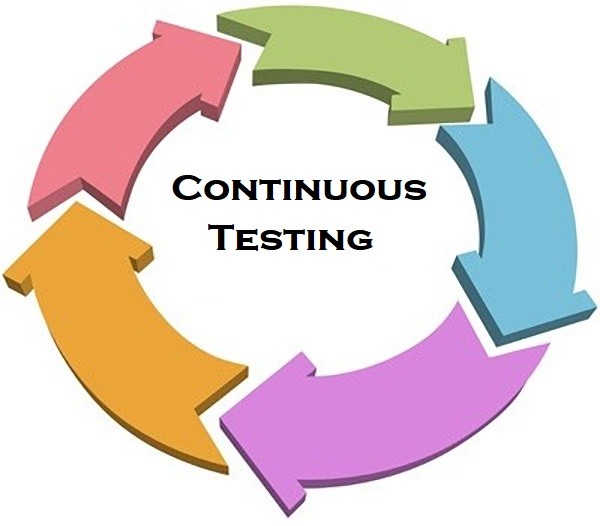The infotainment industry has undergone a phenomenal change with online channels and providing other entertainment features like movies and other on-demand content. Similarly, live streaming features on different smart devices has also gained massive popularity. When it comes to having such experiences, these innovations dedicatedly require to provide a seamless experience to the users. To deliver a seamless experience to the users, software developers and companies greatly depend on pioneering continuous development and testing approaches like Agile, DevOps, and Shift-Right. Moreover, increasing focus on Continuous Testing and Development has enabled the software development services to provide software that easily meets all the demand of the end-users
Continuous Testing (CT) has emerged as one of the powerful ways for enterprises to provide best in class services. CT or Continuous Testing is a relentless process that ensures the quality of the software in the most efficient manner. It evaluates the quality of the software at every step of the delivery process. The main objective of CT is testing early. When it comes to running the QA process and testing, Continuous Testing makes use of agile approaches to provide better efficiency. Continuous Testing is a process where Automation plays a very crucial role.
Some of the fundamental objectives of CT are faster time to market, error-free delivery, holistic view on the quality of the application, and assured efficiency.
Why Should You Go For Continuous Testing?
New and emerging technologies like Artificial Intelligence, Blockchain, Augmented/Virtual Reality, and IOT are changing the scenario of the software industry in a significant manner. While speed is the key, giving a good user experience is also an utmost important factor for the businesses. Hence, organizations need to check their delivery constantly to ensure giving a seamless experience to the users. Always remember one thing that one small glitch can bring down the reputation and brand image of your organization.

Continuous Testing and Continuous Integration make the best duo and this combination ensures the development is faster and seamless.
Suggested Read:
How to builld a Software Requirements Specification document?
So here are some of the key reasons why Continuous Testing is important for software development companies.
1. Application Bound Risks can be reduced with Continuous Testing:
Faster turnaround time is one of the most important benefits which is expected from the continuous testing, but ensuring a risk-free output is also very important. Whenever a code undergoes changes, it could open the doorway to errors. This can lead to a serious impact on the software and the rectifying process can significantly increase the cost amount and delivery time.
The proper implementation of continuous integration ensures that the errors are detected and rectified way ahead in the development cycle and proper measures are taken. It ensures an error-free product delivery to the clients.
2. Continuous Testing Brings Consistency:
When it comes to keeping the right consistency with the whole testing procedure, the combination of continuous testing with automation could be a very effective measure in this purpose. Continuous testing keeps every system and sub-system on a seamless flow.
Continuous Testing makes the configured environment robust and helps in sustaining the environment for all the similar tests.
3. Fault Isolation can be implemented with Continuous Testing:
Fault Isolation is a dedicated practice of designing a system which ensures a very limited outcome in the occurrence of any type of error. The practice of limiting the scope of problems eliminates the chance for damage and establishes an easy to maintain the system.
With the help of CT (Continuous Testing), you can detect and solve the fault isolation in a very fast and convenient manner. The chance of bug appearance, sudden breakdown, and critical issues can be easily avoided because it can isolate the problem before it can cause any sort of damages to the system.
4. Faster Mean Time To Resolution (MTTR):
The MTTR measures the maintenance time for repairing a feature. It sets an average time to fix a feature which is broken or malfunctioning. It tracks the amount of time the required amount of time spent to recover from any kind of failure.
CT can efficiently reduce the MTTR as it ensures the code changes are smaller and easy to detect Fault Isolation system.
5. Faster Releases:
Continuous Testing and Integration ensure faster, smooth and frequent releases. One of the significant advantages of automating a test is that it ensures the code testing is done in a rigorous and constant manner so that the development team can deliver the product at a faster turnaround speed.
6. Improves the Test Coverage:
What could be a better way to ensure more test coverage than implementing Continuous Testing? The answer is “ Nothing.” The reason is pretty obvious – the tests are automated and implemented right from the beginning of the development process. Maximum Test Coverage is one of the most effective ways of ensuring product delivery in a seamless manner.
7. It Focuses on User-Experience:
Regular feedback from the end of the customers helps developers update their program constantly. The combination of Continuous Testing with DevOps keeps the software application more stable and robust. It gives you the ability to write successful test cases from the customer’s viewpoint.
8. Increases the Transparency and Accountability of Team:
CT does not only help you get feedback from the client but also, from your own team. This particular practice increases the transparency in your team and encourages responsible accountability.
Wrapping Up:
Continuous Testing is one of the major ways of ensuring continuous quality. It is a vital measure for the organizations that don’t want to compromise with the quality. It allows enterprise software development services to build an optimum product with zero defects right from the beginning.